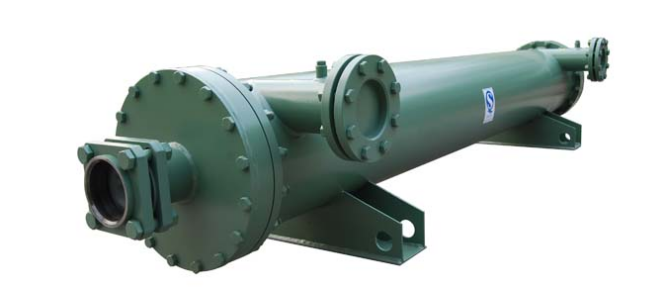What is a chiller?
A chiller (also known as a freezer or refrigeration unit) is a device that achieves heat transfer through the phase change cycle of a refrigerant. Its main function is to provide low-temperature chilled water for central air conditioning systems or industrial equipment. According to the working principle, it can be divided into two types: vapor compression type (mainstream technology) and absorption type. Among them, the vapor compression type unit drives the refrigerant circulation through the compressor to complete the four key processes of compression, condensation, throttling and evaporation. Chillers are mainly divided into two types: ethylene glycol chillers and water-cooled chillers. The chiller uses water as the cooling medium. Ethylene glycol water chillers use a non-toxic, non-flammable and biologically inert fluid called ethylene glycol as the cooling medium.
Why is ethylene glycol used for cooling
The freezing point of ethylene glycol is much lower than that of water. When the temperature is below 0 degrees, water used as the medium is prone to solidification and hinders the circulation of the chiller. However, ethylene glycol has corrosion resistance and anti-freezing properties. Under low-temperature conditions, the use of ethylene glycol can ensure the normal operation of the chiller.
Thermojinn Glycol Chiller
Thermojinn ethylene glycol water chillers Design Features
1.Intelligent Operation
Adopting Microcomputer controller, precise control, automatic loading and unloading with multiple functions such as time setting, fault record remote or central monitor. PLC is available for option.
2.Heat Recovery Unit (optional)
Own a heat recovery patent. Waste heat generated in the refrigeration process is
recovered by H.Stars patented heat recovery unit to provide free hot water up to 55°C. Boiler replacement to save operating cost.
3.Precision Protection
The Chiller electrical protection system includes: reverse protection, phase loss protection, compressor and fan overcurrent protection, low temperature protection, high and low voltage protection, water flow protection, etc.
4.Water Temperature
High temperature type: chilled water outlet 0°C; Medium and low temperature type: chilled water outlet -20°C; Ultra-low temperature type: chilled water outlet -35°C.
5.Professional Design
According to user’s requirements, H.Stars provides professional advice and selects the most suitable equipment which fits perfectly for each project. Different materials of heat exchange will be recommended to avoid corrosion and leakage according to user’s refrigeration medium used in the project.
6.Energy-saving Design (optional)
The variable frequency drive technology greatly improves the Partial load energy efficiency of the chiller ; Evaporative cooling technology with function of high heat exchange efficiency, low investment and save water.
Unit Structure
Air cooled low temperature chiller
40STE series air-cooled screw type low temperature chiller adopts high efficiency dual screw compressors, equipped with self-made high-efficiency shell and tube heat exchangers and
fin type heat exchangers. Heat recovery unit can be configured based on customer needs. Suitable for industry processes in pharmaceutical, chemical, electronics, food processing industries etc. The unit has 24 standard specifications, cooling capacity range: 60kw~340kw, chilled water outlet temperature: 5 °C ~ -35 ° C.
Compressor
The compressor adopts a well known brand screw compressor with a 5:6 screw rotor design, which is 20%- 30% more efficient than a typical compressor. Applicable to environmentally friendly refrigerant like R134A, R407C, R404A with compressor-specific motor, low failure rate, stable and reliable operation, no fault operation time: 50000-80000 hours. The products have obtained two international quality certifications of ISO9001 and ISO9002 and multinational patents in Europe and America.
Shell and tube evaporator / condenser
The condenser and evaporator are the most important components of the chiller. The quality and manufacturing process determine the heat exchange efficiency and lifespan of the unit. It also represents whether a manufacturer has core technology and intellectual property. H.Stars heat exchanger is self-manufactured with design qualification and pressure vessel production qualification in strict accordance with international standards to ensure product safety and reliability
Evaporator
Condenser
High efficiency heat exchanger
Intelligent design to reduce fan energy consumption while achieving maximum heat transfer.Intelligent copper tube design reduces the pressure drop in the coil (the maximum temperature drop is 0.63K when the refrigerant is R404).
High efficiency heat exchanger
HMI (Human Machine Interface)
10″ / 8″ true color touch screen Support USB upgrade. Easy operation and intuitive dynamic operation. Displays control center greatly improves efficiency to provide monitoring, data logging, security protection and convenient operation. The control center has a color liquid crystal display (LCD) and a touch panel. Simply press a single button to display a series of technical data and color maps of the corresponding components, making the chiller clearer and easier to operate.
Full color display screen
Application scenarios
1. Industrial Refrigeration
In chemical/pharmaceutical industries, glycol chillers ensure critical equipment operation through precision temperature control (-40℃ to +15℃). Examples include cooling chemical reactors (maintaining ±0.5℃ during exothermic reactions to prevent decomposition) and condenser systems for pharmaceutical evaporators (accelerating vapor liquefaction under high vacuum to enhance crystal purity).
2. Food Freezing
Delivering -35℃ rapid freezing for meat/seafood. For instance, tuna processing lines with 30% glycol solution achieve core temperatures of -18℃ within 90 seconds. Microfine ice crystals minimize cell damage, extending shelf life by 40%.
3. HVAC Systems
Large commercial buildings utilize glycol heat recovery technology. A Shanghai complex preheats domestic water with chiller waste heat, reducing winter heating energy by 35% and cutting annual carbon emissions by 820 tons
4. Food & Dairy Processing
Aseptic cooling systems maintain 5±0.3℃ in dairy filling zones (HACCP-compliant), preventing yogurt over-fermentation. Cheese vats implement gradient cooling (30℃→15℃/h) to optimize curd firmness
5.Cold Storage
Logistics centers deploy dual-temperature glycol systems: high-zone (0℃) for produce pre-cooling, low-zone (-25℃) for frozen meat. Temperature fluctuation ≤±0.8℃ with 22% lower energy vs. ammonia systems.
6.Chemical Plants
Explosion-proof glycol chillers condense solvents in recovery towers (e.g., NMP regeneration). With -50℃ freeze protection for arctic operations and titanium tubes resisting acidic gases.
Post time: Jun-09-2025












